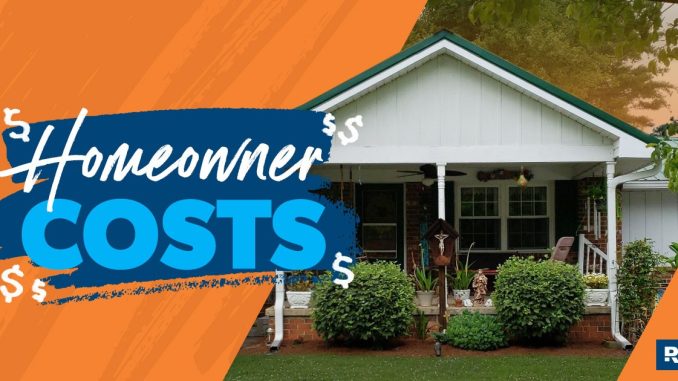
Owning a home is often seen as a hallmark of financial success and stability—a tangible achievement that many aspire to throughout their lives. The appeal is undeniable: the pride of having your own place, the freedom to customize your living space, and the potential to build equity over time. However, beneath this attractive surface lies a complex web of costs that can sometimes catch new homeowners off guard. Understanding the true costs of owning a home goes far beyond the monthly mortgage payment; it requires a comprehensive look at the many financial responsibilities that accompany homeownership.
When people consider buying a home, their minds often fixate on the mortgage—the amount borrowed and the monthly payments due. This is certainly a significant expense, but it’s only part of the story. The mortgage payment itself typically covers principal and interest, but homeowners also need to budget for property taxes, which can vary widely depending on location. For example, a house in a major metropolitan area might come with a hefty property tax bill compared to a similar home in a less densely populated region. These taxes fund local services such as schools, roads, and emergency services, and they tend to rise over time, sometimes unexpectedly adding pressure to a homeowner’s budget.
Another major expense that many new homeowners underestimate is homeowners insurance. This type of insurance protects the property and belongings against damage from events like fire, theft, or natural disasters. The cost of insurance depends on factors such as the home’s location, age, construction type, and the coverage level chosen. For instance, a coastal home in a hurricane-prone area typically carries higher premiums than a property in a more sheltered environment. While insurance offers vital protection, the premiums add a steady cost that must be factored into monthly or annual budgets.
Maintenance and repairs represent another significant but often overlooked cost. Unlike renters, homeowners are responsible for keeping their property in good condition, which means routine upkeep and addressing unexpected problems. Over time, components like the roof, HVAC system, plumbing, and appliances will require repair or replacement. For example, a leaking roof can quickly escalate from a minor inconvenience to a costly disaster if not addressed promptly. Regular maintenance—such as cleaning gutters, servicing heating systems, and painting exteriors—helps prevent such emergencies but demands both time and money. These costs are unpredictable and can vary greatly, which makes setting aside a dedicated “home repair fund” a wise precaution.
Utilities also form a steady and ongoing expense that accompanies homeownership. Electricity, water, gas, and waste disposal bills fluctuate based on usage, weather, and changes in service rates. A larger home or one with older, less energy-efficient systems will naturally incur higher utility costs. Additionally, some neighborhoods require homeowners to pay for services such as trash pickup or homeowners association fees, which contribute to the overall monthly cost of living in the home. These expenses can subtly increase over time, especially as inflation affects energy prices.
Beyond the immediate household costs, there are other financial considerations tied to homeownership. One such example is the potential for special assessments, which are charges levied by local governments or homeowner associations to cover community improvements or unforeseen expenses. Imagine a neighborhood where the local council decides to repair a failing sewer system; the cost might be passed on to homeowners, sometimes amounting to thousands of dollars. These assessments can appear suddenly and are often non-negotiable, making them an important factor to anticipate when calculating the true cost of homeownership.
It’s also essential to acknowledge the opportunity cost involved in owning a home. The money tied up in a down payment, mortgage payments, and upkeep is capital that could otherwise be invested elsewhere, potentially earning returns in the stock market or other ventures. While homeownership can build equity over time, it’s not a liquid asset, meaning that accessing those funds quickly isn’t easy without selling the property. For example, a homeowner might hesitate to make a career move to a different city because of the financial and logistical complications involved in selling their home. This lack of flexibility is often overlooked when the emotional and social benefits of homeownership take center stage.
Furthermore, homeowners should consider the long-term costs associated with potential changes in interest rates and refinancing. If a mortgage has a variable interest rate, rising rates can significantly increase monthly payments. Even fixed-rate mortgages carry risks when refinancing, such as additional fees and extended loan terms, which can add to the overall cost. Many first-time homeowners focus on the initial mortgage offer without fully appreciating how these factors can affect their finances over a 15- or 30-year period.
Despite these challenges, homeownership remains a desirable goal for many, and with good planning, it can be a sound financial decision. The key lies in having a comprehensive understanding of all the costs involved and preparing accordingly. Prospective homeowners who take the time to calculate not just the mortgage payment but also taxes, insurance, maintenance, utilities, and other hidden expenses will be better equipped to handle the realities of homeownership. For example, a family buying a modest home in a suburban area might find their total monthly costs to be 30 to 50 percent higher than the mortgage alone, a gap that requires careful budgeting.
In conclusion, owning a home is much more than simply making mortgage payments. It involves a spectrum of financial responsibilities that can fluctuate and sometimes escalate unexpectedly. Property taxes, insurance, maintenance, utilities, special assessments, and the opportunity cost of tied-up capital all contribute to the true cost of homeownership. By approaching this commitment with realistic expectations and a well-thought-out financial plan, homeowners can enjoy the benefits of having a place to call their own without being blindsided by the hidden expenses. Ultimately, understanding these costs not only helps protect your investment but also ensures that your dream of homeownership remains a rewarding and sustainable reality.